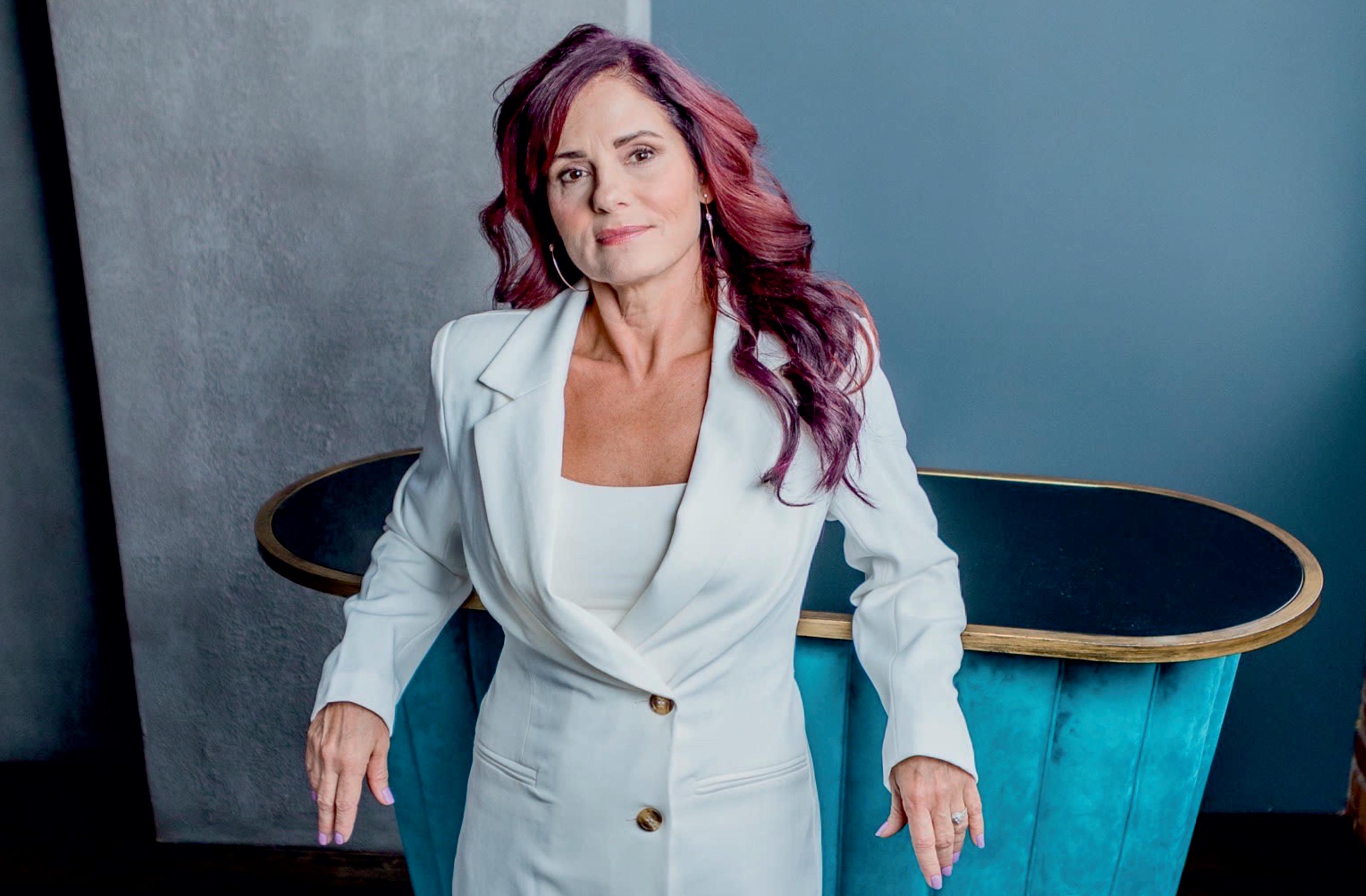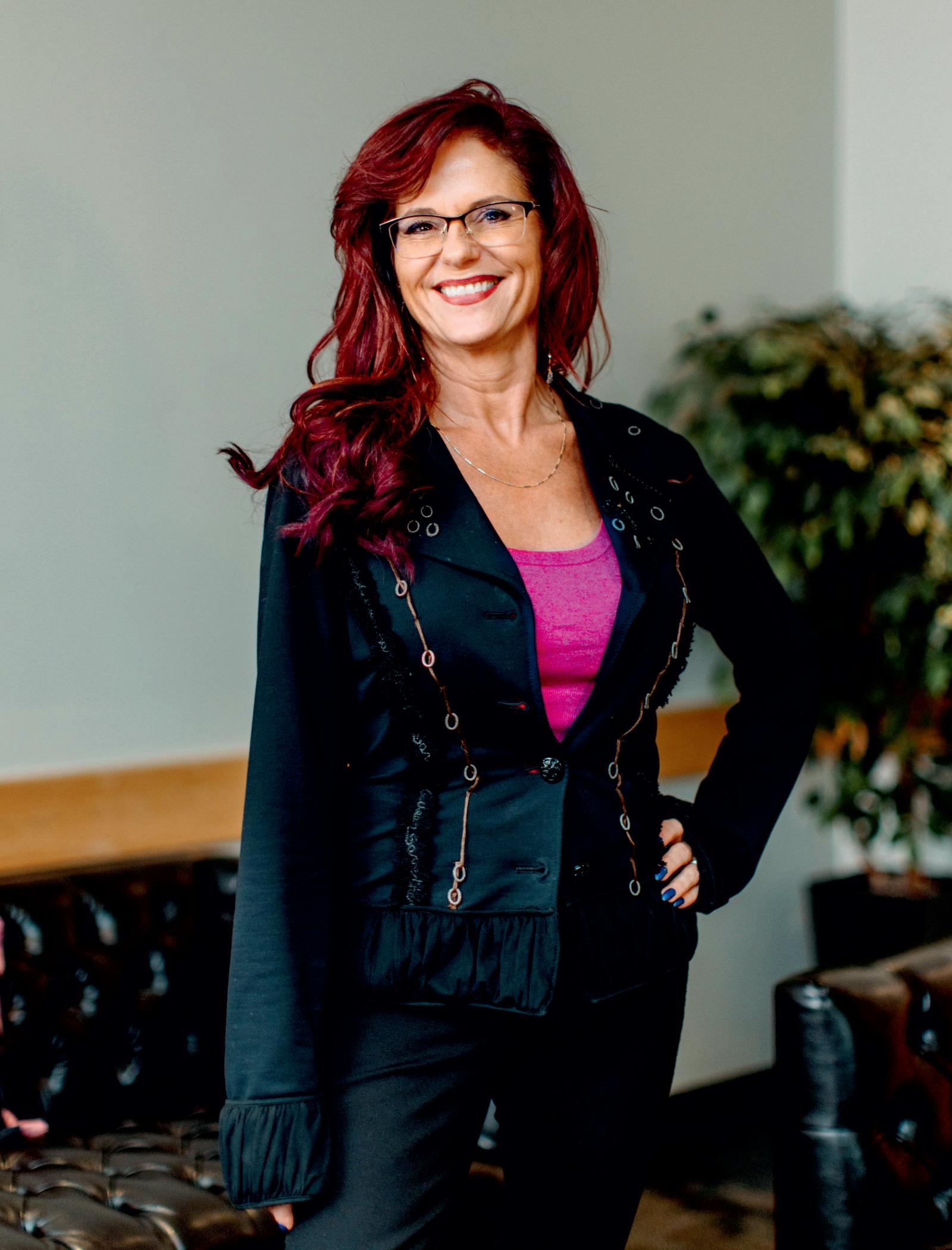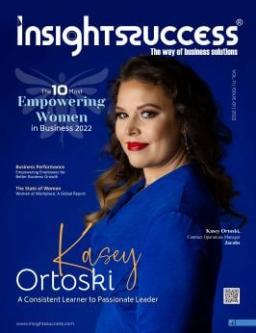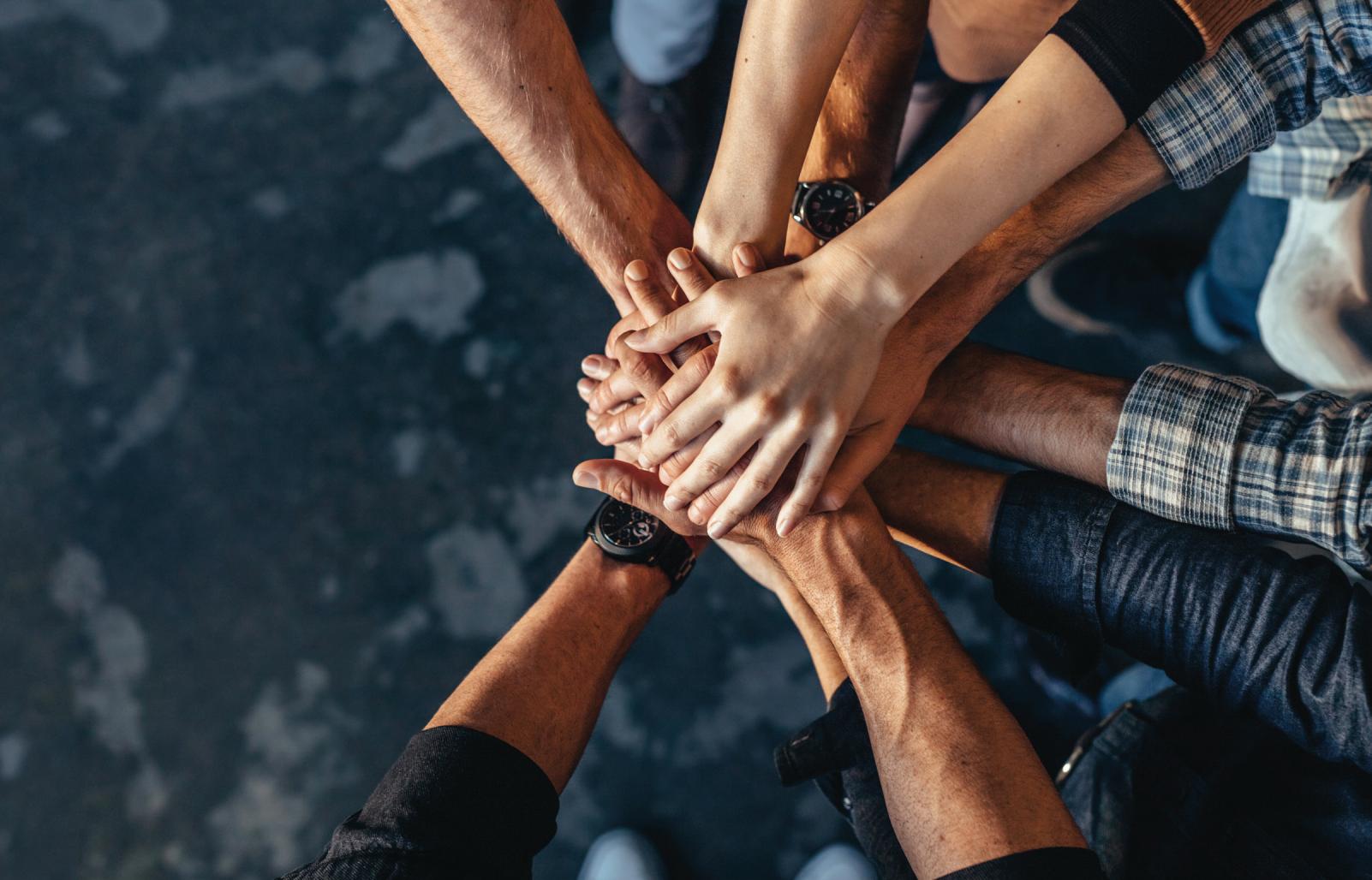
















Inaprofessionlongdefinedbytradition,hierarchy,andprecedent,thewindsofchangeareundeniable,
andtheyarebeingledbyextraordinarywomen.
ThisspecialeditionofInsightsSuccessof Canada's Most Influential Women Lawyers: Revolutionizing the Legal Profession in 2025 is a tribute to the trailblazers, visionaries, and relentless advocates who are reshaping the landscape of law across the country. These women are not only at the forefront of legal practice,butalsoredefiningwhatleadership,equity,andimpactlooklikeinthemodernlegalworld.
Fromcourtroomstoboardrooms,policycirclestocommunityclinics,theseleadersexemplifythekindof courage, intellect, and compassion that drive real change.They are breaking down barriers, championing human rights, advancing legal innovation, and mentoring the next generation of legal professionals often whilenavigatingchallengesuniquetotheirgenderinahistoricallymale-dominatedfield.
Aswespotlighttheirstories,weareremindedthatinfluenceisnotjustabouttitleortenureit’saboutpurpose, resilience, and the ability to inspire others. The women featured in this edition represent diverse backgrounds,legalspecializations,andcareerpaths,buttheyshareacommonthread:adeepcommitmentto justiceandanunwaveringdeterminationtousethelawasatoolforprogress.
Wehopetheirjourneysigniteconversations,sparkinspiration,andreaffirmtheimportanceofinclusionand excellenceineverycornerofthelegalprofession.ThefutureoflawinCanadaisbeingrewritten,andthese womenareholdingthepen.
HappyReading!



Editor-in-Chief
Merry D'Souza
Managing Editor Executive Editor Assistant Editors
Preston Bannister
David King
Senior Sales Managers
Bruno Alves, Jack McDowell
Marketing Manager Technical Head
James M.
Jacob Smile
Technical
Irvin Wilson
SME-SMO Executive
Steve Rodrigues
Jenny Fernandes Lusy Jameson

Robert Brown
Rosy Scott
Angela Ruskin
Business Development Manager
Ryan Brown
Max Floyd Simon, Tom
Dominique T.
Circulation Manager June, 2025
Stella Andrew
sales@insightssuccess.com

We are also available on :



Frank Adams
David Stokes
AnnieNoaKenet Founder
KenetFamilyLaw kenetfamilylaw.com
KateMazzucco FoundingPartner
MichelleMulchan SeniorManaging Lawyer
BeyondLawLLP beyond.law
RussellAlexander Collaborative FamilyLawyers russellalexander.com
MoganDanielsSlagerLLP mdslawyers.com Partner
StaceyL.Stevens PersonalInjuryLawyer
ThomsonRogersLLP trlaw.com
Visionaryentrepreneurwithapassionforcreativestrategy, businessinnovation,andempoweringcommunitiesthrough purpose-driveninitiatives,combiningintuitionwithadeep senseofleadership.
Experiencedlegalprofessionalwithafocusonadvocacy, complexcaseresolution,andclient-centeredsolutions,bringing clarityandstrengthtohigh-stakeslegalmatterswith confidence.
Exceptionallegalmindwithdeepknowledgeoflitigation, negotiation,andregulatoryframeworks,respectedforher leadership,mentorship,andabilitytonavigatehigh-pressure legalenvironments.
Strategicthinkerwithexpertiseincollaborativeleadership,risk management,andgrowthplanning,knownfordriving impactfuldecisionsandfosteringlong-termprofessional partnershipsacrosssectors.
Dedicatedlegaladvocatespecializinginpersonalinjurylaw, knownforhercompassionateapproach,sharplitigationskills, andrelentlesspursuitofjusticeforaccidentvictimsandtheir families.
Stacey understands the tensions between professional ambition and personal fulllment. Her mission is to break the cycle of burnout and self-doubt, especially for women in law.




Thelegalindustryisatacrossroads.Traditionally definedbyrigidhierarchiesandestablishednorms, itmustevolvetomeettherealitiesofthemodern world.Accessibility,fairness,andsustainablecareerpaths arenolongeroptional—theyareessential.Formany professionals,particularlywomen,thelegalfieldremainsa paradox:anavenueofinfluenceandadvocacyyetstill boundbyoutdatedstructuresthatoftendemandpersonal sacrificeandforcewomentochannelmasculineenergy.
"Successdoesnothavetobesynonymouswithburnout.It’s aboutleadingfromaplaceofauthenticity,whereambition andwell-beingcoexist,"saysStaceyL.Stevens,apersonal injurylawyerandpartneratThomsonRogersLLP, inspirationalspeaker,andauthor.Sheisnotjust participatinginthisshifttowardamorebalanced,inclusive profession—sheisdrivingit.Havingforgedanontraditionalpathtosuccess,Staceyunderstandsthetensions betweenprofessionalambitionandpersonalfulfillment.Her missionistobreakthecycleofburnoutandself-doubt, especiallyforwomeninlaw
Stacey’sjourneyintolawwasunconventionalandbest describedasintentional.At15,shelefthomewithnothing butafewgarbagebagsfullofclothesandadetermination toproveeveryonewrong:“OnedayIwillbealawyer”. Despiteconstantdoubtandobstacles,sherefusedtoquit.
Inthemid-80's,shestartedasareceptionistatalawfirm, workedherwayuptolegalassistant,putherselfthrough nightschooltobecomealawclerk,andultimately,at40, becameapersonalinjurylawyer,allwhileraisingtwosons. Hercareerwasbuiltongrit,notprivilege.
Staceywasdrawntopersonalinjurybecauseit’snotjust aboutcasesbutpeople.“It’sabouthelpingindividuals rebuildtheirlivesafterdevastatingtragedies,”shesays. “They’renotjustseenascasefilesbutashumanbeings deservingofjustice,dignity,andsupport.”
Thisdeterminedmotherandgrandmotherknowsathingor twoabouthowtonavigateaworldthatoftentoldherthe oddswereagainsther.Butjustasshehadrefusedtoaccept thoselimitations,shenowfightstomakesureherclients don’teither

ForStacey,oneofthemostfulfillingpartsofherworkis beingasteadypresenceforherclients,guidingthem throughsomeofthemostchallengingmomentsoftheir lives.“Idon’tjustrepresentthem—Iempowerthemto reclaimtheirsenseofcontrol,theirconfidence,andtheir future.”
Thisphilosophyextendsintoherbroadermission:helping aspiringfemalelawyersdeveloptheskillsandstrategies thatstrengthentheirconfidenceandresilience.Staceyis determinedtohelpwomenlawyersredefinesuccessontheir ownterms–withoutguilt,burnout,orlosingthemselvesin theprocess.
Younglawyersquicklyrealizethedemandsofalaw practicecanbeunforgiving.“Themessagingcomingoutof lawschoolisthatwomenlawyersareexpectedtowork harderandshowupmorethantheirmalepeerstoachieve thesamesuccess,”Staceysays.Formany,thatmeans hidingtheirtrueauthenticselves,ultimatelyleavingthem drainedmentally,physically,andemotionally
Stacey is not waiting for the system to shift—she is creating the shift. She is showing women that they already have the power to redene their own success, both professionally and personally. “






For Stacey, one of the most fullling parts of her work is being a steady presence for her clients, guiding them through some of the most challenging moments of their lives. “I don’t just represent them—I empower them to reclaim their sense of control, their condence, and their future.
In2023,theFederationofLawSocietiesofCanada releasedPhase1ofit’sReportontheStateofMental HealthintheLegalProfession,whichfoundthat67.5%of practicingwomenlawyerssuffersilentlywithanxiety, depressionandburnout.StudiesacrossNorthAmerica confirmthatlawvaluesmasculinetraitslikeunshakable confidence,emotionaldetachment,andaggressive communicationstyles,puttinguniquestressorsonwomen. Thismanifestsinhigherburnoutratesandself-caredeficits.
MentoringtheNextGenerationofWomeninLaw
Staceybelievesimpostersyndromecreepsin.“Women oftensilencethemselvesinmeetings,overanalyzetheir contributions,andquestionwhethertheywilleverbe enough,”shesays.“Theyabsorbtheenergythatcomes fromunspokenbiases,likebeingtalkedoverinnegotiations orbeingaskedtobethenotetakerorgetcoffee.”These microaggressionsoftenfeedwomen’sinnercriticsand impacthowtheyshowupintheirlives,andhowtheysee theirpotentialtobecomeleaders.Overtime,ittakesatoll.
In2023,theLawSocietyofOntarioalsoreleaseditsannual StatisticalSnapshotofLawyersandParalegals,revealing troublingfindings.Whilemorethan50%oflawschool graduatesarefemale,about30%ofwomenleavetheir practicewithinfiveyears.
“Thesestudiescameoutattheperfecttime,”saysStacey Duringthepandemic,shewasexhausted,frustratedandat herwitsend.“Foryears,Iwasmanagingasuccessfullaw practice,commutingtoworkandhome,andthenmeeting myfamily’sneeds.ButIneverstoppedtothinkaboutthe impactthishadonme;Ijustpushedthrough,thinkingit waspartofthejob.”ThesefindingspromptedStaceytodo moreresearchandreflectonhowsocietalexpectations shapedhervaluesandbeliefs.
“Ilearnedthatyoungwomen(andmen)areshapedby societalexpectationsthatultimatelyleavethemwithaset ofpreconditionedvaluesandbeliefs,”saysStacey.“But oncetheyentertheworkforce,theselearnedbehavioural traitsmaynolongerservethem.”Theseincludeprioritizing others’needsovertheirown,minimizingtheirownneeds outoffearofexclusion,enduringhardshipinsilenceand peoplepleasing.
Thiscanleadwomentooverextendthemselves, micromanagetheirenvironments,orsacrificetheirown authenticitytomeetotherpeople’sexpectations.“Women arethenexpectedtoexcelinaworkplacewheretheyare toldto“leanin,”despitefacingsystemicbarriers,andshow assertivenessthatmayresultinunflatteringlabels,”says Stacey.“Intheend,womenlawyersoverworktoprovetheir worth,suppresstheirauthenticselvestofitrigidnorms,or burnoutfromtryingtobalanceimpossibleexpectations.”
Staceysawherselfintheresearchandrealizedshehadto lookatthingsdifferently.“IhadtoquestionhowIwas actingasaresultofsocietalnorms,andwhethermy behaviourwashurtingratherthanhelpingme.”Foryears, Staceyfollowedunspokenrulesinthelegalworld—project confidence,staycompetitive,andnevershowemotion—but wasthatthetrueStacey?Asshedismantledoldvaluesand beliefsthatnolongerservedher,shecreatedanewsetthat redefinedwhatachievementandauthenticitymeanttoher Now,sheisstillconfidentandcompetitive,butinaway thatisrootedincollaborationandcompassion.She communicatesauthentically,whetherwithstaff,clientsor opposingcounsel.Sheintegratesherroles—lawyer,mother, leader,andmentor—ratherthanrejectingthem.
Twodecadesago,whenStaceyworkedasasummerlaw student,therewasonlyonewomanlawyer Afterarticling,




“
For Stacey, one of the most fullling parts of her work is being a steady presence for her clients, guiding them through some of the most challenging moments of their lives. “I don’t just represent them—I empower them to reclaim their sense of control, their condence, and their future.
“
shepracticedatanotherfirmwhereshewastheonlyfemale lawyer.Itwasn’tuntilshejoinedThomsonRogersLLPthat shebegantoseeashiftinfemalerepresentation.Today, nearly40%ofThomsonRogers’partnershipismadeupof women.“ThisissomethingIamveryproudof,”says Stacey.TheLawSocietyofOntario’s2020AnnualReport onmembershipstatisticsfoundthatwomenmadeuponly 26%oflawfirmpartners.“It’simportantformetobeata firmwherewomenareatthetable,andyoungfemale lawyershavementorstoturntoforadvice.”
Overthepast24years,Staceyhasmentoredmanywomen lawyers,bothformallyandinformally,who’vefound questionedwhethertheycansustaintheprofessionthey oncedreamedof.OnesuchlawyercametoStaceyata breakingpoint,unsureifshehadwhatittooktocontinue. Throughconversations,Staceyhelpedherseethather strugglesweren’tareflectionofhercapabilitybutofthe pre-conditionedvaluesandbeliefsthatshapedherstory Theyexploredwaysforhertorewritethenarrativesshe encounteredeverydayfromothersandherowninnercritic. Together,theyworkedonacknowledgingtheclashbetween herfeminineenergyandtraitsandthemasculineenergyand traitsrequiredasapracticinglawyer,identifyingtheimpact thishadonher,anddevelopingstrategiestoempowerherto begroundedinboth.Theyfocusedonrewritingherstory, reframingoldnarrativesandredefiningsuccessinaway thatwasauthentictoher
Today,thislawyerstandsconfidentandaccomplished, leadinghercareeronherownterms.Hertransformationis notjustpersonalbutproofthatwhenwomenhavetheright support,theydonothavetochoosebetweensuccessand
fulfillment.ForStacey,mentoringwasareminderthat “leadershipisnotaboutforcingwomentofitintosystems thatarenotmadeforusbutaboutempoweringthemto buildcareersthatalignwiththeirvaluesandaspirations.”
Womenwhostopchasingimpossibleexpectationsand releaseself-imposedguiltcanstepintocareersbuilton resilience,balance,andexcellence.Thisisn’tabout rejectingambitionbutpursuingitinawaythatdoesn’t requireself-destruction.
Stacey’sfirmbeliefinthepoweroftransformationfuels her.Everyday,shewakesupknowingshehasan opportunitytomakeanimpactinherclients’andmentees’ lives.Herjourneyisatestamenttothepowerof authenticity,demonstratingthatwomencanredefine successontheirterms—withoutsacrificingtheirwellbeing.
Staceyisnotwaitingforthesystemtoshift—sheiscreating theshift.Sheisshowingwomenthattheyalreadyhavethe powertoredefinetheirownsuccess,bothprofessionally andprofessionally.Assheleadsbyexample,Staceyis pavingthewayforanewgenerationoflawyerswhowillno longerequatesuccesswithburnout.
The Canadian legal profession has undergone rapid transformationduringthelasthundredyears,driven in large measure by the dedication and industry of womenlawyers.Fromstatute-exclusiontoleadershiponthe bench and at the bar, women have challenged the traditional grainandreshapedthecountry'slegallandscape.Whilemuch progress has been made, this article also highlights the systemic challenges that persist and the steps necessary to ensure a more inclusive and equitable future for all legal professionals.
Clara Brett Martin's entry into the legal profession was a breakthroughmomentinCanadianhistory Herstruggletobe acceptedasa"person"underthelawandherultimatetriumph opened the doors of opportunity for future generations of womenlawyers.Institutionalbarrierswerethereforher,and women,thoughtheyhadaccomplishedsomuch,hadlimited access, were discriminated against in society, and were excludedfromleadershiprolesinlawfirmsandcourtsoflaw fordecadestocome.
In the mid-20th century, women began gaining theoretical recognitionaslawyers,butpracticalimpedimentspersisted.It wasn't until later decades that de facto gender equality for lawyers was realized. Women such as Beverley McLachlin, Canada's first female Chief Justice of the Supreme Court, demonstrated that women could not only be accommodated butexcelatthemostadvancedechelonsoflegalpractice.
Women now form nearly half of all practicing barristers in Canada. In 2019, 49,175 women barristers and 56,678 men barristers existed— that is a clear indication of progress


towards gender equality. Law schools have achieved this through the application of inclusive hiring and admission policies. The University of Windsor's Faculty of Law, for instance, reported that 70% of its class of 2024 consisted of women,aninitiativethatreflectseffortstowelcomediversity andresilienceamongstudents.
Furthermore,gendervisibilityalsogainedgroundforwomen lawyers.The Chambers Canada Guide has seen tremendous increasesintherateofwomenlawyersinrecentyears.Inits latest edition, 28.4% of highly ranked lawyers were women—a 10% plus growth from six editions. Notably, Ontario leads in gender representation among highly ranked lawyers at 25%, followed by Alberta at 20%. However, disparities persist in provinces like Quebec and British Columbia,whichlagbehindnationalaverages.
Studiesshowhigherattritionamongwomenduetowork-life conflicts,lowerexposuretomentorship,andinstitutionalbias within law firms. Women remain in the minority as heads; only 23% of senior positions in legal directories are held by women lawyers a minor increase from 15% six years earlier.
Thelegalprofessionisalsowithinthescopeofpayequityand women's career development. Though more men are being replaced by new intakes into the profession, altogether too many of them are being met with obstacles that stop them frombuildingcareersintoseniorpositions.Thisisanareathat necessitates systemic change on the part of law firms and professional organizations to treat women solicitors on the sametermsandaffordthemthesameopportunities.
Gender portrayal varies significantly across the Canadian provinces. Ontario and Alberta dominate with relatively higher percentages of top-ranked female attorneys Saskatchewanalsoboastsencouragingpercentagesat22.2%. Some other provinces such as Manitoba, however, have no top female attorneys—a dismal indicator of the persisting imbalancesintheprofession.
Throughoutmuchofthenation,evenbeyondthemajorcities, there are institutional obstacles to women. These include difficulties like demanding legal careers and family life, a shortage of institutionalized mentorship programs, and culturalattitudesthatmaydiscouragewomenfrompursuing or remaining in senior legal roles. Law societies and
professional organizations must conduct localized assessments to understand the root causes of inequality and develop targeted initiatives—such as mentorship networks, leadership development programs, and regional awards that spotlightwomen’sachievements.
Women lawyers' integration into the Canadian system is a witnesstotheirgrit,determination,andstrengthofcharacter tofightagainstcenturies-longbarriersinthelegalprofession. With much achieved on the fronts of representation and visibility,equalitystillhastobeachievedforonaconsistent basisacrossseveralfronts.Soundmentorshipschemescanbe a strong source of inspiration and direction for women to proceedoncareerdevelopmentandleadershippathways.
Simultaneously with this, policy intervention by law societies i.e., intervention to address systematic discrimination,equalremuneration,andflexibleemployment arrangements is essential to constructing equitable professional cultures Integration of diversity through equitable admissions policies into law schools also establishes the foundation for long-term representation Additional acknowledgment of women's success through awards and professional league tables not only legitimates their labor but also inspires and acts as a vehicle of empowermentforaspiringlegalprofessionals.
The arrival of women lawyers in Canada is a reason to celebrate, yet also an imperative. Pathbreakers broke glass ceilings,andwomenlawyersnowgoontoredefineleadership andvisionsofdistinctioninlaw.Asdatasuggests,equalityis always just beyond reach conditioned by provincial boundaries, attrition, and entrenched barriers to career progression.Tocreateanintegratedlegalprofession,thelegal industry requires more than parity figures; it requires recurring, thoughtful change that carries women with every progressionintheirowncareerpaths.
















In a country where justice, equity, and inclusion are
considered foundational principles, the rise of female legal trailblazers in Canada tells a powerful story of perseverance, purpose, and progress These pioneering women have shattered barriers, defied expectations, and redefined the legal landscape making the profession more reflectiveofthecommunitiesitserves.
Their journey is more than just a professional triumph; it's a testament to the enduring fight for gender equality in one of theworld’smostrespectedlegalsystems.
Historically,theCanadianlegalfieldwasdominatedbymen, and the inclusion of women was both delayed and resisted. Clara Brett Martin, the first woman to become a lawyer in Canada in 1897, had to fight institutional resistance, gender bias, and a deeply entrenched belief that women lacked the temperament for legal work. Her victory, however, marked the first crack in the proverbial glass ceiling, laying the groundwork for generations of female legal trailblazers to follow.
Throughout the early and mid-20th century, women in law faced overt discrimination from being denied articling opportunitiestobeingoverlookedforcourtroomappearances orpartnerships.Theircompetencewasquestioned,andtheir ambition was often dismissed as inappropriate. Yet, many persisted, often becoming experts in family law, human rights, or advocacy work fields considered “acceptable” for womenatthetime.
The narrative began to shift in the latter half of the 20th century.Withbroadersocialmovementspushingforequality andwomen'srights,thelegalprofessionsawaslowbutsteady transformation.Womenbegannotonlytoentertheprofession


in greater numbers but to assume roles of leadership and influence.
Today, women like Justice Rosalie Abella, the first Jewish womanappointedtotheSupremeCourtofCanada,exemplify what modern female legal trailblazers can achieve. Justice Abella’sworkinhumanrightslawandheruniqueperspective on equality and fairness have left an indelible mark on Canadianjurisprudence.Similarly,BeverleyMcLachlin,who served as Canada’s first female Chief Justice, redefined judicial leadership during her 17-year tenure, making decisionsthatshapednationalpoliciesonissuesrangingfrom indigenousrightstofreedomofspeech.
Theirjourneysremindusthatrepresentationmattersnotjust innumbersbutinperspectivesthatchallengestatusquosand inspiresystemicchange.
It'simportanttorecognizethatthecategoryof“femalelegal trailblazers” is far from monolithic. Indigenous women, Black women, immigrant women, and women from the LGBTQ+ community continue to carve their own unique paths in the Canadian legal ecosystem, often navigating additionallayersofdiscriminationandcomplexity.
TrailblazerslikeDr CindyBlackstock,aGitxsanactivistand socialworkerwhohasusedlegalavenuestoadvocateforFirst Nations children, demonstrate how legal activism intersects with cultural identity and community responsibility Similarly,lawyerssuchasNaiomiMetallic,thefirstMi’kmaq womantoclerkattheSupremeCourtofCanada,arechanging thefaceandfocusofCanadianlegalpriorities.
These stories remind us that the journey of female legal trailblazers is also about making room for intersectional voices,allowingthelegalsystemtoevolveinbothsubstance andstructure.
Oneofthemostimpactfulaspectsoftheriseofwomeninlaw is the strong culture of mentorship and advocacy that has followed.Womenwhohavebrokenthroughlegalceilingsare nowactivelypullingothersupwiththem—offeringguidance, opening doors, and creating safe spaces within law firms, courts,andlegaldepartments.
Organizations such as the Women’s Legal Education and Action Fund (LEAF) and Canadian Association of Black
Lawyers (CABL) play a pivotal role in nurturing emerging talentandadvocatingforequitablepracticesacrosstheboard. More law schools now prioritize gender equity and offer platformsforfemalelawstudentstoconnectwithestablished professionals.
Thestrengthoftoday’sfemalelegaltrailblazersliesnotonly in their individual achievements but also in their collective momentum. As a community, they continue to challenge outdated norms, demand accountability, and build bridges thatensurethejourneyforwardismoreinclusivethantheroad behind.
The legal profession in Canada is still not without its challenges. Gender pay gaps, underrepresentation in leadership roles, and issues like workplace harassment remain pressing concerns. But the direction is clear, and the progressisundeniable.
Thenextgenerationoffemalelegaltrailblazersisenteringthe field with a broader vision one that integrates technology, embracesholisticjustice,andrecognizesthelawasatoolfor societaltransformation.Theyarenotjustaskingforaseatat thetable;theyareredesigningthetableitself.
Withmorewomenbeingappointedasjudges,takingonhighprofile litigation roles, and leading law firms, the impact is already visible. Their presence is normalizing excellence, redefiningpowerstructures,andanchoringtheprofessionin empathy,ethics,andequity
Conclusion
The journey of female legal trailblazers in Canada is both inspiringandongoing.Fromtheearliestdaysofstruggleand exclusion to the present era of impact and innovation, these women have changed not only what is possible in the legal world—but also what is expected.As they continue to rise, challenge, and lead, they serve as living proof that justice is strongestwhenitreflectsthediversityofthepeopleitserves.













